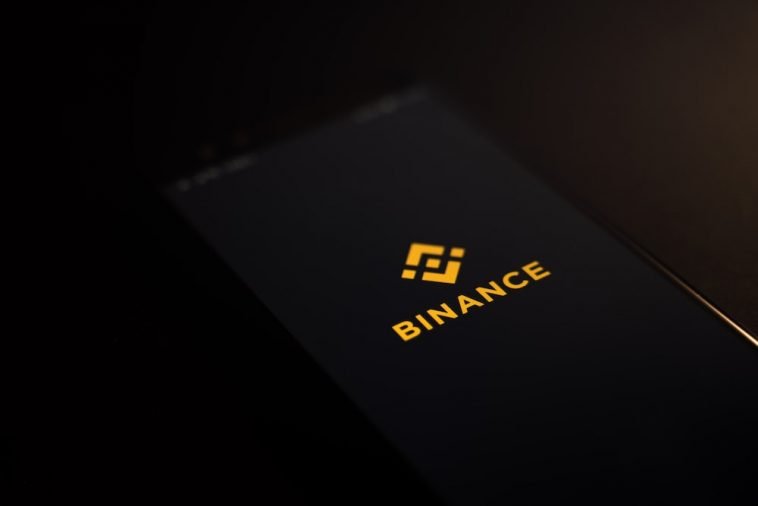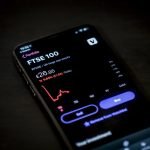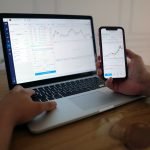Introduction.
Are you interested in venturing into the world of Forex trading and looking for a reliable platform to begin your journey?
Look no further than Binance, one of the leading cryptocurrency exchanges that offer a user-friendly interface and a wide range of trading features.
In this guide, we will explore the steps you need to take to start Forex trading on Binance, enabling you to tap into the global foreign exchange market and potentially capitalize on currency price movements.
Binance, known for its robust cryptocurrency trading services, has expanded its offerings to include Forex trading, providing users with a seamless platform to trade various currency pairs.
Disclaimer.
Please note that any financial advice I provide is for informational purposes only and should not be construed as professional financial advice.
Investing involves risk and you should always do your research and consult with a licensed financial advisor before making any investment decisions.
I do not endorse any specific investments and is not responsible for any financial losses or gains that may result from following our advice.
The information provided by me is based on our best knowledge and understanding of the subject matter. Still, we make no representations or warranties of any kind, express or implied, about the completeness, accuracy, reliability, suitability or availability with respect of the information, products, services, or related graphics contained in any of our responses.
How Do I Start Forex Trading on Binance?
Binance, a leading cryptocurrency exchange, not only offers a wide range of digital assets but has also expanded its services to include Forex trading.
In this article, we will walk you through the steps to start Forex trading on Binance, empowering you to participate in the global foreign exchange market.
Step 1: Create an Account on Binance.
To begin your Forex trading journey on Binance, the first step is to create an account. Visit the Binance website (www.binance.com) and click on the “Register” or “Sign Up” button.
Provide the necessary details, including your email address and a secure password. Take note of the terms and conditions, and complete the registration process.
Step 2: Complete the KYC Verification.
To comply with regulatory requirements, Binance may require you to complete a Know Your Customer (KYC) verification process. This process involves submitting identification documents to verify your identity.
Follow the instructions provided by Binance to complete the verification process. Once verified, you can enjoy enhanced security features and access additional trading functionalities.
Step 3: Deposit Funds into Your Binance Account.
After successfully creating and verifying your account, it’s time to deposit funds into your Binance account.
Binance supports various deposit methods, including bank transfers, credit/debit cards, and cryptocurrencies.
Choose the deposit method that suits you best and follow the instructions provided by Binance to complete the transaction.
Ensure that you review the deposit fees and processing times associated with each method.
Step 4: Navigate to the Forex Trading Section.
Once your Binance account is funded, navigate to the Forex trading section on the Binance platform. Locate the section labelled “Forex” or “Fiat Trading” on the Binance interface.
Click on the appropriate tab to access the Forex trading features. Here, you will find a range of currency pairs available for trading.
Step 5: Select a Currency Pair.
In the Forex trading section, carefully select the currency pair you want to trade. Binance offers a diverse selection of currency pairs, including major, minor, and exotic pairs.
Consider factors such as market liquidity, volatility, and your trading strategy when choosing a currency pair.
Binance provides comprehensive charts, price data, and technical analysis tools to help you make informed trading decisions.
Step 6: Place a Trade.
Once you have selected a currency pair, it’s time to place a trade on Binance. Decide whether you want to buy (go long) or sell (go short) the currency pair based on your market analysis and trading strategy.
Specify your trade parameters, including the order type (market, limit, or stop-limit), quantity, and price. Review the details of your trade before executing it. Take note of any applicable trading fees.
Step 7: Monitor and Manage Your Trades.
After executing a trade, it’s crucial to monitor and manage your positions effectively. Binance provides real-time market data, interactive charts, and order management tools to help you track your trades.
Set stop-loss and take-profit levels to manage your risk and protect your capital. Continuously monitor market conditions and make adjustments as necessary.
Hey there, dear reader! We hope you’re enjoying the content on our blog. Did you know we have a treasure trove of other insightful articles waiting for you?
Check out the link to the articles below to learn how to be productive and scale your Forex career.
- How To Succeed In Forex Trading
- How To Teach Yourself Forex Trading
- How To Create a Robot For Forex Trading
- How To Open a Demo Account For Forex Trading
- How To Minimize Losses and Maximize Profits In Forex Trading
- How To Learn Forex Trading Fast
- How To Use Fundamental Analysis In Forex Trading
- How To Make a Forex Trading Journal
- How To Create a Forex Trading Journal In Excel
- How To Do Forex Trading With AI
- How To Use RSI Indicator In Forex Trading
- How To Trade Gold In Forex
- How To Grow a Small Forex Account
- How To Get a Job as a Forex Trader
- How To Start Forex Trading In Nigeria
Conclusion.
Starting Forex trading on Binance opens up a world of opportunities for traders interested in diversifying their portfolios and participating in the global foreign exchange market.
By following the steps outlined in this guide, including creating a Binance account, completing the KYC verification, depositing funds, accessing the Forex trading section, selecting currency pairs, and placing trades, you can embark on your Forex trading journey with confidence.
Remember to conduct thorough market research, develop a solid trading strategy, and practice risk management to maximize your chances of success. Happy trading!
Hey there, dear reader! We hope you’re enjoying the content on our blog. Did you know we have a treasure trove of other insightful articles waiting for you?
Check out the link to the articles below to learn how to be productive and scale your Forex career.
- How To Succeed In Forex Trading
- How To Teach Yourself Forex Trading
- How To Create a Robot For Forex Trading
- How To Open a Demo Account For Forex Trading
- How To Minimize Losses and Maximize Profits In Forex Trading
- How To Learn Forex Trading Fast
- How To Use Fundamental Analysis In Forex Trading
- How To Make a Forex Trading Journal
- How To Create a Forex Trading Journal In Excel
- How To Do Forex Trading With AI
- How To Use RSI Indicator In Forex Trading
- How To Trade Gold In Forex
- How To Grow a Small Forex Account
- How To Get a Job as a Forex Trader
- How To Start Forex Trading In Nigeria






GIPHY App Key not set. Please check settings